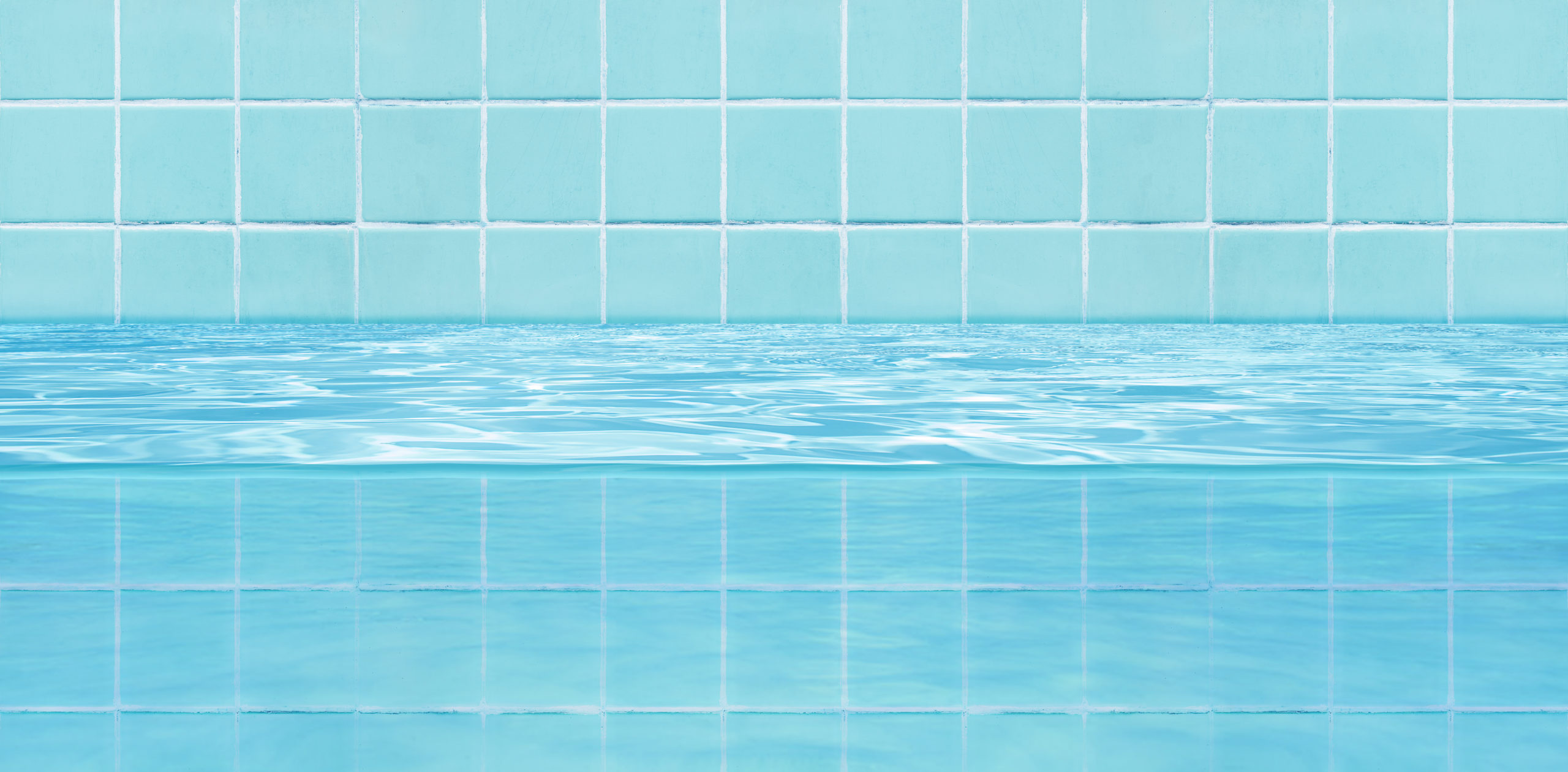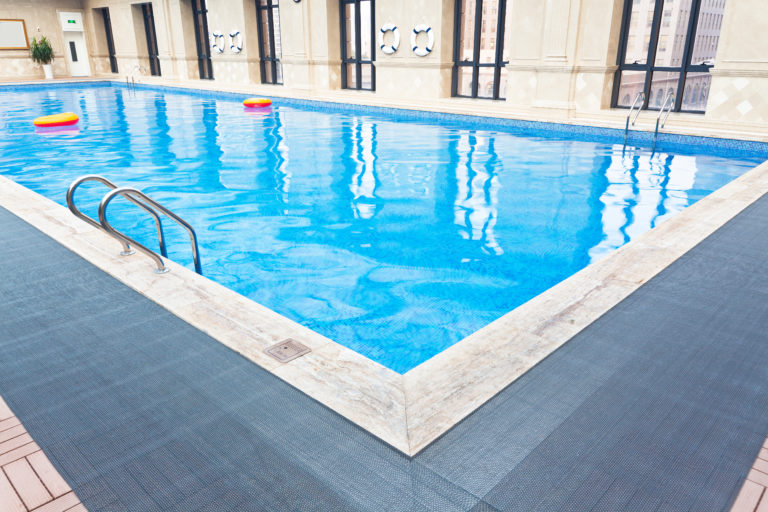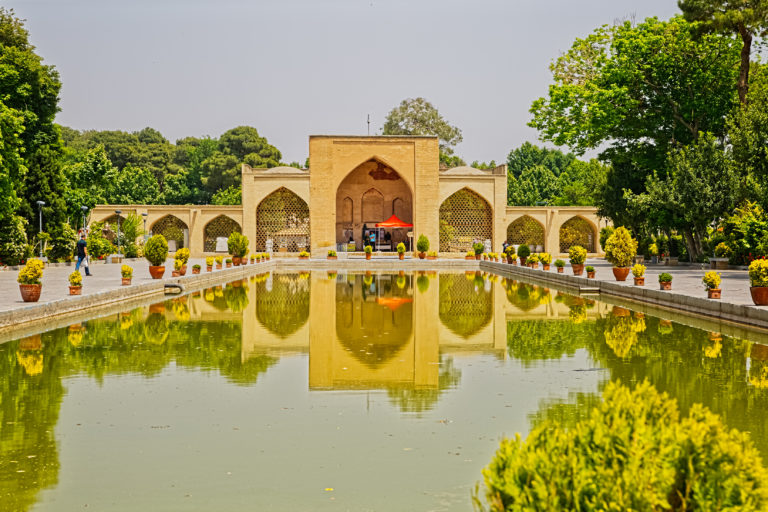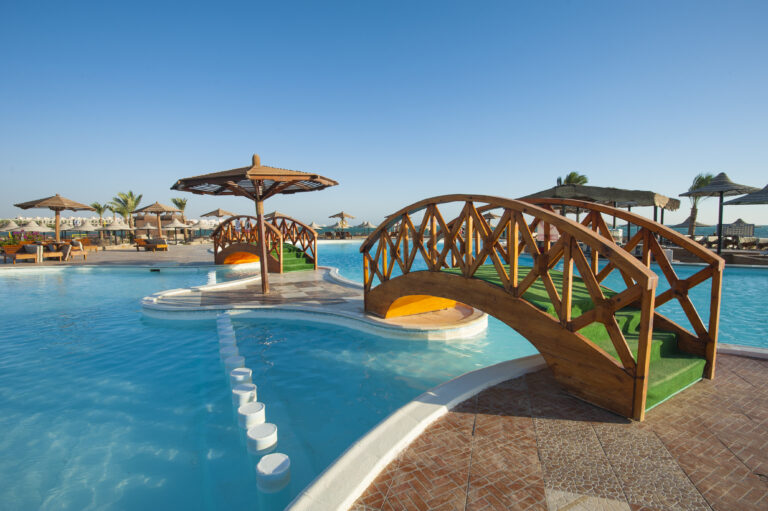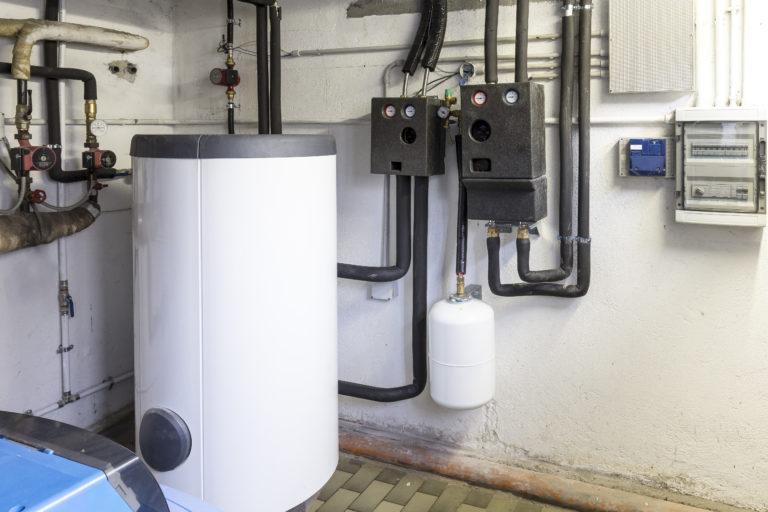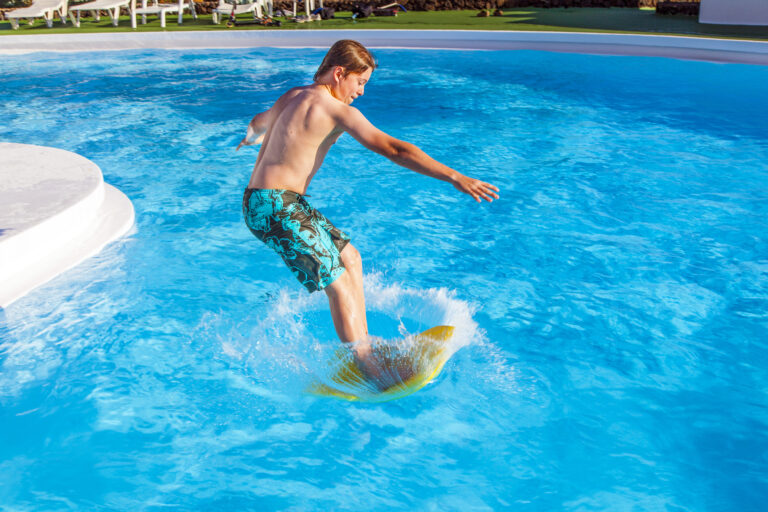The Role of Texture and Material in Pool Design
You’re planning your dream pool, but have you considered the impact of texture and material on its design? It’s not just about looks; they can affect safety and maintenance too.
In this article, we’ll explore how you can make smart choices that enhance both the aesthetics and functionality of your pool. Let’s dive into the world of pool design together!
Understanding the Importance of Texture in Pool Design
You’ve got to appreciate how texture plays a crucial role in pool design. It affects not just the aesthetics, but also the safety and comfort of the swimmers. It’s about more than just appearance; it’s about texture perception and how that impacts your entire experience.

You know what I mean – imagine stepping into a pool with a rough surface. It might look appealing, but if it scratches your feet or makes you feel uncomfortable when you’re trying to relax, then it’s not doing its job correctly.
Texture safety is another key aspect that shouldn’t be overlooked. A slippery pool floor can lead to unfortunate accidents which nobody wants. That’s why it’s important to select materials for your pool that offer both style and safety features.
Let’s not forget how textures can influence our perceptions too. The right texture can make a small space seem larger, or create an inviting atmosphere for visitors. So whether you’re considering a pebble finish or opting for smooth tile, remember texture isn’t just about touch – it’s visual too!
In short, understanding the importance of texture in pool design is essential for creating a safe and enjoyable environment while making an aesthetic statement as well!
Decoding the Influence of Material Choice in Pool Construction
You’re about to delve into the significant role material choice plays in pool construction. Consider how the durability and maintenance demands of materials directly influence long-term costs, but don’t overlook their aesthetic appeal either.
Material Durability and Maintenance
It’s important to consider the durability and maintenance requirements of materials when designing a pool. Material life expectancy and texture safety implications are key factors that need your attention.
| Material | Life Expectancy | Texture Safety Implications |
| Vinyl | 5-9 years | Smooth, but can become slippery |
| Concrete | Over 50 years | Rough, reducing slippage risk |
| Fiberglass | 25 years | Non-abrasive, low slip potential |
Vinyl doesn’t last as long but is smooth to touch, yet potentially slippery. Concrete offers longevity with a rough texture for safer footing. Fiberglass lasts for decades with a non-abrasive surface minimizing slipping risks. So, you’ve got choices – each with its unique blend of durability and safety considerations. Make sure your decision aligns not only with aesthetics and budget but also ensures safe swimming experiences!
Aesthetic Appeal of Materials
Don’t forget, while considering longevity and safety, the look of your chosen option is also essential in creating a visually appealing oasis. Material versatility becomes crucial here. You’re not only selecting a material for its durability but also how it contributes aesthetically. Texture perception plays a significant role as well; does the texture add or detract from your overall design?
Consider these aspects:
– Material Colour: Does it complement your landscape? Is it soothing to the eyes under sunlight?
– Texture Feel: Does it provide comfort underfoot? Can you walk barefoot without discomfort?
– Design Flexibility: How versatile is the material? Can you create unique designs with it?
Material Impact on Costs
Bear in mind how your choice can significantly affect the overall expenses of your project. When selecting pool materials, a cost effectiveness analysis is pivotal. You’re not just looking at upfront costs; you’ve got long-term maintenance to consider too.
Some materials might be pricier initially but could end up saving you money down the line because they require less upkeep.
Sustainability considerations also come into play here. Materials that are durable and have a low environmental impact often align with cost effectiveness over time. They’ll last longer, needing fewer replacements and repairs, thereby reducing your ongoing expenditures.
The Interplay Between Texture and Material in Pool Aesthetics
Understanding how texture and material interplay in pool aesthetics isn’t just about visual appeal, but also about how these elements affect the overall feel and experience of the pool. Texture perception plays a crucial role here – it’s not enough for a surface to merely look good; it should also provide comfort underfoot and ensure safety when wet.
Material compatibility is another factor you can’t ignore. It directly impacts the longevity, maintenance, and even color scheme of your pool. Remember, every choice you make adds to the user’s experience. So let’s consider a few things:
– The cool touch of marble on a hot day.
– The rustic charm of rough stone edges.
– The sleek modernity of polished ceramic tiles.
– The naturalistic appeal of pebblecrete textures.
– The warmth wood decking brings to the poolside area.
Each material has its unique texture that contributes to its aesthetic value while having practical implications too. So next time when planning your pool design, don’t just think about what looks good – think about what feels good as well. And remember: striking that perfect balance between texture and material could elevate your pool from being simply ‘nice’ to truly spectacular!
Practical Considerations for Texture and Material Selection
Moving beyond aesthetics, you must also consider practical aspects when selecting texture and material for your pool. This entails thinking about the environmental implications and safety measures related to different materials and textures.
| Material | Environmental Implications | Safety Measures |
| Concrete | High energy use in production, potential chemical runoff into water supply | Can be slippery when wet, requires regular cleaning |
| Fiberglass | Lower energy use in production but non-recyclable at end of life | Non-slip surface, easy to clean |
| Vinyl Liner | Low initial resource use but liner needs replacing often creating waste | Can be made slip-resistant, require maintenance to prevent issues like tearing |
| Natural Stone | Renewable if locally sourced; otherwise high energy cost for transport | Non-slip options available, but can harbor bacteria requiring more cleaning |
| Tile | Depending on type can have high or low environmental impact | Typically non-slip; grout may need regular cleaning |
As seen in the table above, each material has unique environmental and safety considerations. Identifying these upfront will help you make an informed decision that balances style with sustainability and safety. Remember: a beautiful pool is not just one that looks good-it’s also environmentally friendly and safe for everyone to enjoy.
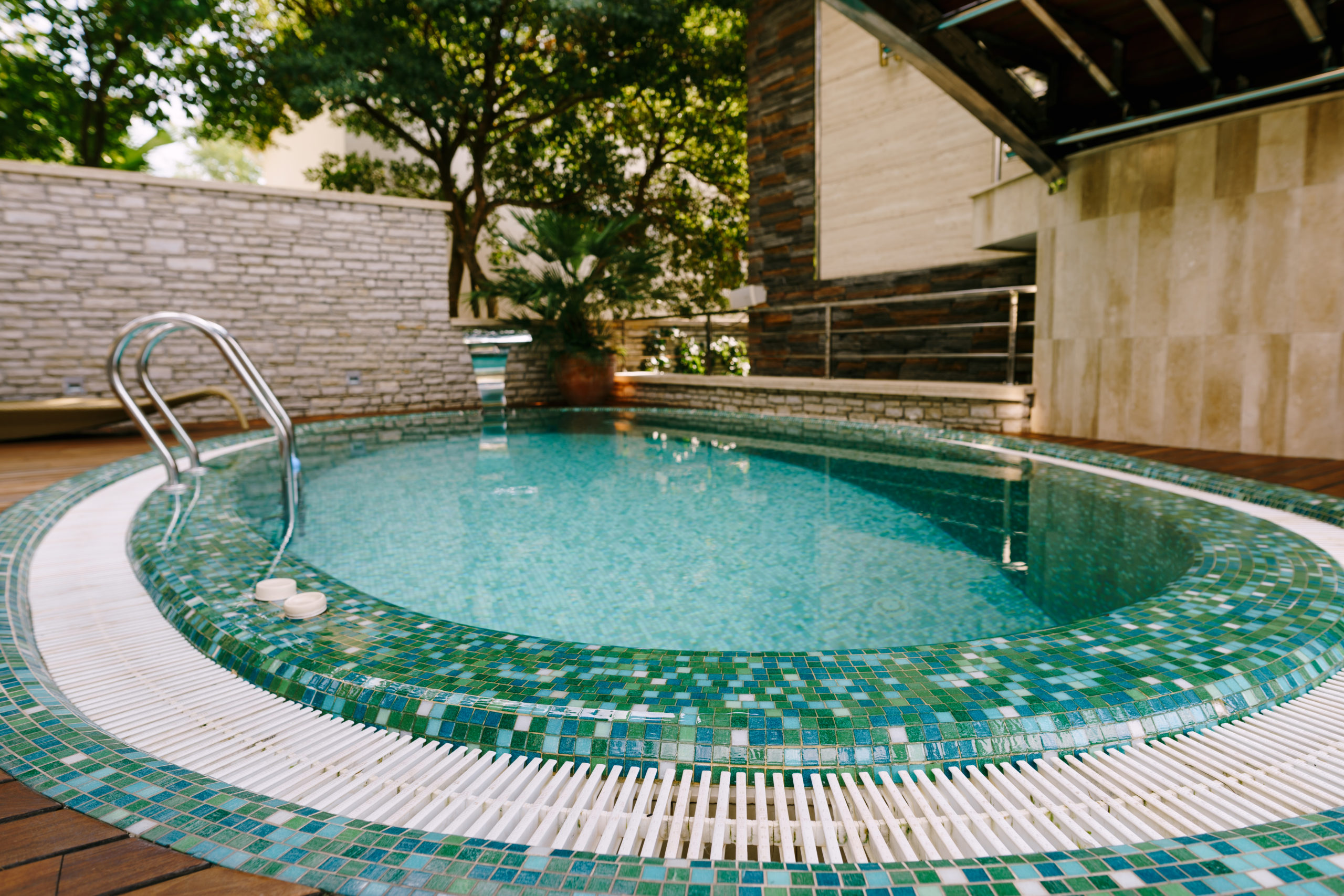
Innovative Trends in Texture and Material Use in Pool Design
You’re about to delve into the exciting world of emerging texture trends and innovative material utilization in pool design.
You’ll uncover how these developments are not only pushing boundaries in creativity but also significantly impacting design aesthetics.
Get ready to explore how these game-changing trends can enhance your pool design projects, making them stand out in a sea of similarity.
Emerging Texture Trends
Let’s dive into the latest texture trends transforming the pool design industry.
You’ll notice an increased focus on texture safety measures, with non-slip surfaces becoming a must-have in any modern pool design. They’re not only stylish but also crucial in preventing accidents around wet areas.
Texture’s environmental implications are another pivotal consideration. Eco-friendly materials that mimic natural textures like stone or wood are surging in popularity. They’re sustainable, require less maintenance, and seamlessly blend with outdoor surroundings, enhancing your poolside experience.
Remember, choosing the right texture can dramatically change your pool area’s look and feel while ensuring safety and sustainability.
So why not embrace these emerging trends? Your perfect oasis awaits!
Innovative Material Utilization
Innovations in the use of different substances are revolutionizing how we think about outdoor spaces, and they’re proving to be game-changers in the industry. As you redesign your pool area, consider integrating eco-friendly materials into your plans. They’re not only beneficial for our planet but also add unique aesthetics to your backyard oasis.
Material recycling is another trend you shouldn’t overlook. It’s all about giving a second life to previously used items – an old bench could become a stylish deck chair or reclaimed wood could transform into a stunning poolside bar.
These innovations aren’t just trends; they represent a significant shift towards sustainability in design. So why wait? Make that change today and dive right into the world of innovative material utilization.
Impact on Design Aesthetics
It’s clear that this shift towards sustainable practices significantly alters how we perceive beauty in our outdoor spaces. Texture perception and material authenticity play a huge role in design aesthetics, especially when it comes to pool designs.
Consider how the use of different textures can impact your sensory experience:
* The rough texture of natural stone against your feet
* The smooth, cool surface of ceramic tiles
* The gentle ripple of water against pebble finishes
* The warm, grainy feel of wooden decking
Each material brings its own unique aesthetic to the space while maintaining environmental integrity. It’s not just about looking good; it’s also about creating a tactile experience that connects you directly with nature and sustainability.
Case Studies: Successful Applications of Texture and Material in Pool Design
We’re going to dive into several case studies that highlight successful applications of texture and material in pool design.
The first one showcases the power of texture versatility. Picture a residential pool with an innovative mosaic bottom, where each tile’s unique texture reflects light differently, creating a dynamic visual effect that changes throughout the day.
The second case study focuses on material sustainability. Think about a resort-style pool lined with eco-friendly stone composite, offering durability without compromising the environment. It’s not just about aesthetics; it’s about making responsible choices too.
Another example is a public splash pad where texture versatility plays a key role in safety and fun. Different textures underfoot provide sensory feedback for kids running around while also reducing slip hazards.
The final case study features a rooftop infinity pool at an upscale hotel. Here, both texture versatility and material sustainability are at play-sleek glass tiles create mesmerizing reflections while sustainable concrete ensures longevity.
In these examples, you can notice how each design choice doesn’t only enhance aesthetics but also improves functionality and sustainability. The takeaway? When designing pools, don’t underestimate the impact of selecting the right textures and materials-you’d be surprised at how much they can transform your space!
Frequently Asked Questions
What Are the Safety Implications of Different Textures and Materials in Pool Designs?
Different textures can influence swimmer traction, making surfaces slippery or easy to grip. Material choice impacts water temperature; darker materials attract more heat. You’ve got to consider these safety aspects in your design.
How Do Texture and Material Choices Affect Maintenance and Longevity of the Pool?
Your choice of texture and material significantly impacts pool maintenance and longevity. Material durability can extend your pool’s lifespan, while texture aesthetics may require more upkeep to keep the pool looking its best.
Can the Same Material Be Used to Create Different Textures in Pool Design?
Absolutely, you can use the same material to create different textures in pool design. Material versatility is key here. It’s how texture influence varies, affecting both aesthetics and functionality of your pool.
What Are Some Budget-Friendly Materials and Textures That Can Be Used in Pool Design?
You can achieve affordable luxury finishes on a budget using DIY pool materials. Consider textured concrete or vinyl, they’re cost-effective and can mimic pricier options like natural stone or tile beautifully.
Are There Any Environmental Considerations When Choosing Pool Textures and Materials?
Yes, there are environmental considerations. Texture influences pool temperature; rough textures absorb more heat. Material impacts eco-friendliness; natural stones and recycled glass are sustainable choices that don’t harm the environment as much.

